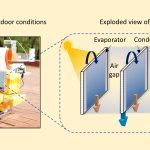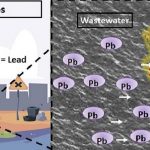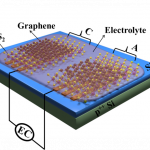
Water confined between parallel graphene sheets exhibits several interesting anomalies, one of which is a low static dielectric constant. A new study carried out by researchers in the Solid State and Structural Chemistry Unit has unraveled the origin of this anomaly using linear response theory, a capacitor model and computer simulations.
The researchers find that the water layers at the interfaces between the liquid and sheets, with a substantially weakened dielectric permittivity, make a disproportionately large contribution, reducing the effective value of dielectric constant of the entire system.
The team also studied the dynamics of water molecules at a microscopic level. They found that the water molecules residing in these so-called “electrically dead” layers align in the same orientation and yet remain dynamically active, residing only for a short time in the layer. While these timescales are not substantially different compared to those of water molecules at distant layers, the dipole moment fluctuations of the interfacial layer molecules are quenched.
The study provides new insights into the dielectric anomaly of nanoconfined water, a topic of great current interest.






